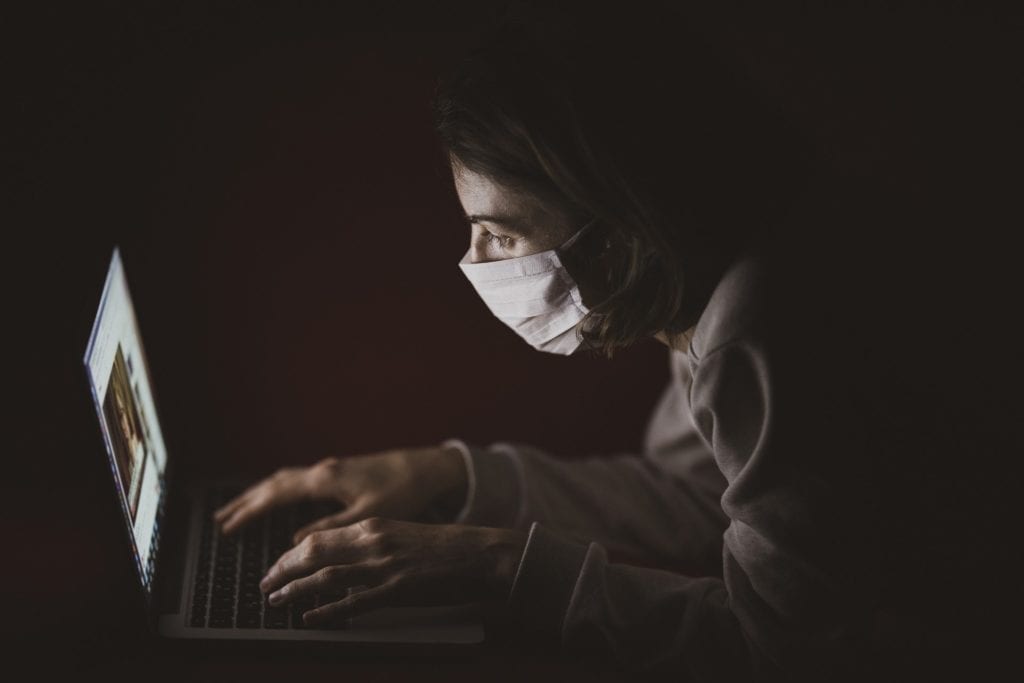How Big Data Is Being Used in the Fight Against Coronavirus
Times of crisis often serve as proving grounds for new or developing technology. That’s certainly true of the coronavirus pandemic, which has put many rising technologies to the test. This idea is perhaps most visible in how companies and governments are using big data in the fight against COVID-19.
Big data showed substantial promise before the pandemic, with the market worth more than $168 billion in 2018. Through the COVID-19 outbreak, though, it’s shown itself to be a valuable tool for more than just business. It’s become an essential means of addressing the virus.
Forecasting Hospital Capacity
With any disease outbreak, avoiding an overload of health care resources is a leading concern. This issue is the driving concept behind “flattening the curve,” which may result in the same overall infection numbers, but a functioning health care system. Some hospitals have turned to big data analytics to assist in this endeavor.
The Vanderbilt University Data Science Institute recently started building a data analytics model for Monroe Carell Jr. Children’s Hospital. With such a resource, the hospital could visualize what would happen under different circumstances. Officials could then see if they need to adjust their processes or resources to handle future changes.
With so much uncertainty about the virus, hospitals need to be sure they’re prepared for a variety of circumstances. Modeling these eventualities with big data analytics helps. Predictive analytics is allowing hospitals to understand their capacity to address emergencies before they happen.
Identifying Possible Treatments
Measuring hospital resource depletion isn’t the only way big data can help health care professionals. By analyzing patient cases and historic drug responses, researchers may be able to find a treatment more quickly. Data science has proven effective at highlighting connections people have missed, which is crucial in medical research.
One of the reasons big data is so useful is the sheer size and variety of its data sets. The National COVID Cohort Collaborative (N3C) takes this idea further by combining the resources of 15 different institutions. With this information, N3C hopes to find viable treatment options for COVID-19 patients.
Researchers won’t be able to find a cure based on big data analytics alone. It provides a starting point, though. Using big data to narrow down the options speeds the process, saving lives.
Tracking Social Distancing
Social distancing regulations are essential to slowing the spread of the virus, but are difficult to enforce. While local governments can measure it, though — thanks to big data. Companies and authorities can analyze location information from people’s phones to see where they are going.

If data shows that people in an area aren’t social distancing, governments can extend quarantine regulations. These analytics will also help officials visualize the efficacy of distancing measures when compared to infection rates.
As data companies have started releasing location reports, it’s even highlighted inequality. According to stats from Cuebiq, movement in high-income areas decreased as much as 90%, but not in low-income neighborhoods. This seems to suggest that wealthier citizens may have an advantage when it comes to staying put. As a result, more impoverished people may be at higher risk of contracting COVID-19.
Highlighting Needs
As seen in the Cuebiq report, big data can demonstrate inequality even when that’s not the purpose of the analysis. This capacity for revealing disparities in need is yet another advantage of big data amid coronavirus. By highlighting different people’s needs, it can then enable authorities to enact equitable policies.
The virus outbreak doesn’t affect every demographic equally. Consequently, the most effective responses will be those that account for this inequality. For example, since lower-income neighborhoods are at higher risk of infection, health care efforts could prioritize these areas.
If it weren’t for big data, officials might not be able to understand these disparities. As previously mentioned, analytics tools are particularly skilled at making connections that people often miss. They can help people discover the need for equitable treatment they might’ve overlooked otherwise.
Informing Recovery Plans
Managing the pandemic as it continues is only half of the equation when it comes to coronavirus responses. Authorities also need to plan how to move forward as the outbreak begins to subside. Big data is helping in this area, too, as it demonstrates the value of different approaches.
Location data has shown an increase in park use in some locations. Previous studies have shown that parks can improve physical and mental health, and location data during COVID-19 showed people use these facilities if available. In response to this data, authorities could consider emphasizing this type of infrastructure to improve public health following the pandemic.
Big data analytics can also show how different reopening strategies have impacted the spread of the virus. This information can serve as a baseline for further reopening phases.
Increased Concerns Over Big Data Use
While big data has undoubtedly demonstrated its value in the pandemic, its reception hasn’t been entirely positive. As information collection becomes increasingly prevalent, concerns over privacy start to rise. Some people have called for further regulations in light of big data’s rise during the outbreak.

In a single day, people generate 4 petabytes of data on Facebook alone. Most people are likely unaware of just how much info they create or what companies can tell from it. As new reports come out, demonstrating the power of big data, these people may grow increasingly concerned.
These concerns, however prominent, won’t be the downfall of big data. Instead, they’ll most likely lead to safer, more responsible governance, from legal restrictions or companies wishing to stay in good faith with the public. In the end, these rising concerns improve big data by calling for increased security.
The Need for Better Data Management
Despite rising concerns, the pandemic has illustrated the need for big data more than anything. One of the reasons there’s so much confusion surrounding COVID-19 is that different agencies and governments are reporting conflicting information. Without a comprehensive data pool, it can be challenging to be sure of what’s right and what isn’t.
Big data can settle some of these disputes by considering all available information and uncovering the truth. It’s a foundation of science that if a sample size isn’t large enough, any conclusions may not represent reality. Small datasets lead to false assumptions, which can be dangerous during a pandemic.
Even after the virus subsides, big data’s consistency will be a valuable tool for health care. Analytics can reveal where flaws in hospital data management originate, such as faulty claim denials. These affect one in every 10 patients, so addressing where these arise can help a considerable amount of people.
Big Data Is Changing Society
Big data is transforming the way businesses run, and the pandemic has shown that it may affect more than that. Using it to fight COVID-19 has proved it’s a useful tool in medical research, economic planning and even social justice.
Data analytics have provided a place of certainty in a period of unrest. All these benefits will ensure that big data helps society move forward after the pandemic instead of taking a step back. It will keep us headed in the right direction in our fight against COVID-19.
Martin Banks is the founder and Editor-in-Chief of Modded. He covers the world of technology, gear, and more.











